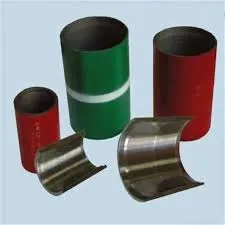- Afrikaans
- Albanian
- Amharic
- Arabic
- Armenian
- Azerbaijani
- Basque
- Belarusian
- Bengali
- Bosnian
- Bulgarian
- Catalan
- Cebuano
- Corsican
- Croatian
- Czech
- Danish
- Dutch
- English
- Esperanto
- Estonian
- Finnish
- French
- Frisian
- Galician
- Georgian
- German
- Greek
- Gujarati
- Haitian Creole
- hausa
- hawaiian
- Hebrew
- Hindi
- Miao
- Hungarian
- Icelandic
- igbo
- Indonesian
- irish
- Italian
- Japanese
- Javanese
- Kannada
- kazakh
- Khmer
- Rwandese
- Korean
- Kurdish
- Kyrgyz
- Lao
- Latin
- Latvian
- Lithuanian
- Luxembourgish
- Macedonian
- Malgashi
- Malay
- Malayalam
- Maltese
- Maori
- Marathi
- Mongolian
- Myanmar
- Nepali
- Norwegian
- Norwegian
- Occitan
- Pashto
- Persian
- Polish
- Portuguese
- Punjabi
- Romanian
- Russian
- Samoan
- Scottish Gaelic
- Serbian
- Sesotho
- Shona
- Sindhi
- Sinhala
- Slovak
- Slovenian
- Somali
- Spanish
- Sundanese
- Swahili
- Swedish
- Tagalog
- Tajik
- Tamil
- Tatar
- Telugu
- Thai
- Turkish
- Turkmen
- Ukrainian
- Urdu
- Uighur
- Uzbek
- Vietnamese
- Welsh
- Bantu
- Yiddish
- Yoruba
- Zulu
Coupling Tube Connection Fitting Solutions for Enhanced Fluid Transfer Systems
Understanding Coupling Tube Fittings Essential Components in Fluids Management
Coupling tube fittings are vital components in piping systems, used widely across various industries such as oil and gas, pharmaceuticals, and chemical processing. Their primary function is to connect two lengths of tubing, enabling the transport of fluids and gases efficiently and securely. Made from various materials, including stainless steel, brass, and plastic, these fittings ensure leak-free connections vital for system integrity and safety.
One of the key advantages of coupling tube fittings is their versatility. They come in different sizes, shapes, and configurations, allowing engineers and designers to customize systems according to specific application needs. Straight couplings are commonly used to join two parallel tubing sections, while elbow couplings can change the direction of the flow, ensuring that pipelines maintain efficiency even in complex layouts.
The design of coupling fittings significantly influences their performance. Swagelok or Parker tube fittings are renowned for their high quality and reliability. These products often feature a two or three-piece design, allowing for easy installation and maintenance. They are equipped with ferrules that create a tight seal when compressed, preventing leaks and ensuring durability under pressure.
In high-pressure applications, the choice of materials is crucial. Stainless steel fittings are preferred for their strength and corrosion resistance, making them ideal for use in harsh environments. High-performance polymers can also serve well in less demanding situations, where chemical compatibility and lower pressure applications are key concerns.
coupling tube fitting

Installation of coupling tube fittings requires a good understanding of the system's specifications. Proper alignment and torque settings are essential to achieve a leak-free connection. Improper installation can lead to catastrophic failures, resulting in costly downtimes and hazardous spills. Therefore, suppliers often provide detailed installation guidelines, and professionals are advised to receive adequate training to handle these components effectively.
Moreover, regular maintenance is essential to ensure the longevity of coupling tube fittings. Routine inspections and replacing worn-out parts can help identify potential issues before they escalate, thereby maintaining operational efficiency. Facilities should have a reliable inventory system to manage spare parts and ensure that maintenance schedules are followed diligently.
Another vital aspect of coupling tube fittings is their contribution to enhancing safety in fluid transport applications. They often serve in systems that handle toxic, flammable, or high-temperature substances. Hence, manufacturers adhere to stringent industry standards and regulations to enhance safety features and performance. Certification from organizations like ISO, ASME, and ASTM gives users confidence in the reliability of these fittings.
In summary, coupling tube fittings are essential components in various piping systems, offering flexibility, safety, and reliability. Their effective design and adaptability make them suitable for an extensive range of applications. By understanding their functionality and ensuring proper installation and maintenance, industries can enhance their operational performance and safety while managing fluids and gases efficiently. Whether in high-pressure pipelines or intricate machinery, coupling tube fittings play an indispensable role in the smooth operation of many industrial processes.
-
Tubing Pup Joints: Essential Components for Oil and Gas OperationsNewsJul.10,2025
-
Pup Joints: Essential Components for Reliable Drilling OperationsNewsJul.10,2025
-
Pipe Couplings: Connecting Your World EfficientlyNewsJul.10,2025
-
Mastering Oilfield Operations with Quality Tubing and CasingNewsJul.10,2025
-
High-Quality Casing Couplings for Every NeedNewsJul.10,2025
-
Boost Your Drilling Efficiency with Premium Crossover Tools & Seating NipplesNewsJul.10,2025







